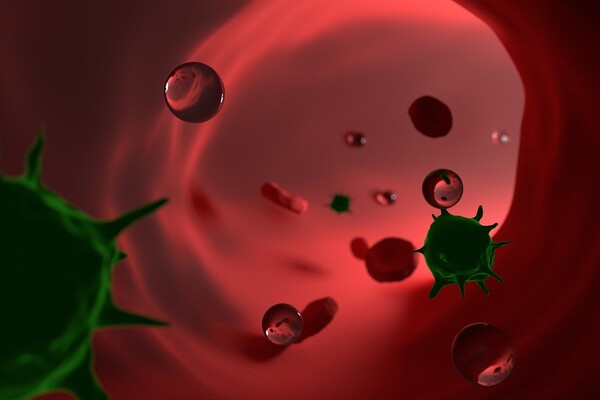One of the treatments for blood cancers, including leukemia, is a bone marrow transplant, a powerful immunotherapy that prevents relapse. The correct term for bone marrow transplant is "hematopoietic stem cell transplantation (HSCT).”
In the past, a 100 percent histocompatibility antigen match between donor and recipient was a prerequisite for a safe transplant and treatment.
However, this is no longer the case.
"Half-matched HSCT, which refers to a 50 percent match in histocompatibility antigens, is now possible," said Choi Eun-ji, professor of hematology at Asan Medical Center (AMC), on the hospital’s YouTube channel. "Medical advances have made it possible to successfully perform a transplant even if the histocompatibility antigens are only partially matched," she explained.

The evolution of stem cell transplants
Hematopoietic stem cells, which translates to "blood-making mother cells," are responsible for creating the blood cells. Found in the bone marrow, blood, and umbilical cord, hematopoietic stem cells are eventually transformed into red blood cells, white blood cells, and platelets.
White blood cells are responsible for protecting the body from foreign substances and cancerous cells. When a person develops a blood cancer such as leukemia, a disease in which abnormal white blood cells proliferate, the body naturally develops serious problems such as infection.
At this time, the first treatment is to eliminate abnormal white blood cells and produce normal white blood cells through strong drug treatment such as anticancer drugs, and when this treatment is successful, the patient reaches remission.
"HSCT is a type of powerful immunotherapy that prevents leukemia in remission from returning," Choi said. "It is a treatment in which healthy stem cells are transplanted into a healthy patient to attack and kill the few remaining leukemia cells and replace them with the donor's stem cells by engrafting in the bone marrow."
HSCT involves transplanting healthy stem cells into a patient with leukemia who is in remission, killing any remaining leukemia cells at a microscopic level, and allowing healthy "blood-making mother cells" to infiltrate the patient's bone marrow to produce healthy white blood cells.
There are two main types of HSCT: allogeneic and autologous. Autologous HSCT uses the patient's own stem cells, while allogeneic HSCT uses stem cells from a family member or other donor with a histocompatibility antigen match to the patient.
HSCT is a highly effective immunotherapy used to treat myelodysplastic syndromes including leukemia, malignant hematologic diseases such as lymphoma and multiple myeloma, and various benign hematologic diseases including aplastic anemia and genetic diseases.
Risks and challenges in stem cell transplants
However, there are also risks associated with the treatment.
These include graft failure and graft-versus-host disease. Engraftment failure is a rejection reaction in which the donor's hematopoietic stem cells fail to engraft in the patient's body and are eliminated, according to Choi. There is also a disease called graft-versus-host disease in which the donor's cells attack the patient's own cells, such as the skin, intestines, and liver.
In these cases, the immune systems of the patient and donor react by recognizing each other as different individuals.
Histocompatibility antigens are cell membrane proteins on the surface of human cells, and mismatches in these antigens are a common mechanism by which the body's immune cells recognize viruses, bacteria, and cancer cells to attack, Choi explained.
The rise of half-matched stem cell transplants
To avoid the risk of graft failure and graft-versus-host disease, HSCT could only be performed in the past if the patient and donor's histocompatibility antigens matched. However, medical advances have made it possible to achieve successful transplantation with only a partial match.
The methods are also varied.
"Various treatments have been developed, such as weakening the patient's immune system through chemotherapy or radiotherapy before the stem cell transplant to make it easier to accept the donor's stem cells, administering immunosuppressive drugs after the transplant to control the patient's immune system from rejecting the stem cells, and using other cellular therapies to correct the immune system and make it easier to accept the transplanted stem cells,” Choi said.
In the early days of this therapy, haploidentical stem cell transplants had very poor outcomes due to complications associated with histocompatibility antigen mismatches. However, recent advances, such as haploidentical allogeneic stem cell transplantation with low-intensity pretreatment, have made it possible to almost eliminate donor-specific complications in some diseases, such as acute myeloid leukemia.
In fact, at AMC, there was almost no difference in outcomes between histocompatibility antigen "matched" and "half-matched" donors in terms of survival after HSCT for patients with acute myeloid leukemia in the first remission, Choi said.
"Semi-matched HSCT may have different post-transplant outcomes depending on pre-transplant treatments and adjunctive therapies, such as prophylactic agents for graft-versus-host disease," Choi said, "which is why it is important to receive treatment at an experienced medical center."
Related articles
- [Contribution] Give leukemia patients a future without fear of recurrence
- Hematopoietic stem cell transplants from haploidentical related donors prove effective
- ‘Half-matched bone marrow transplant better for acute myeloid leukemia’
- ‘No difference between unrelated foreign donor and half-matched donor in HSCT’
- BeiGene’s Brukinsa expands indication for CLL, SLL in Korea
- GI Innovation to pursue license out deal for allergy treatment with Japanese firms
- Clinical trials of xenotransplants scheduled to start in 2024 Q4 in Korea

